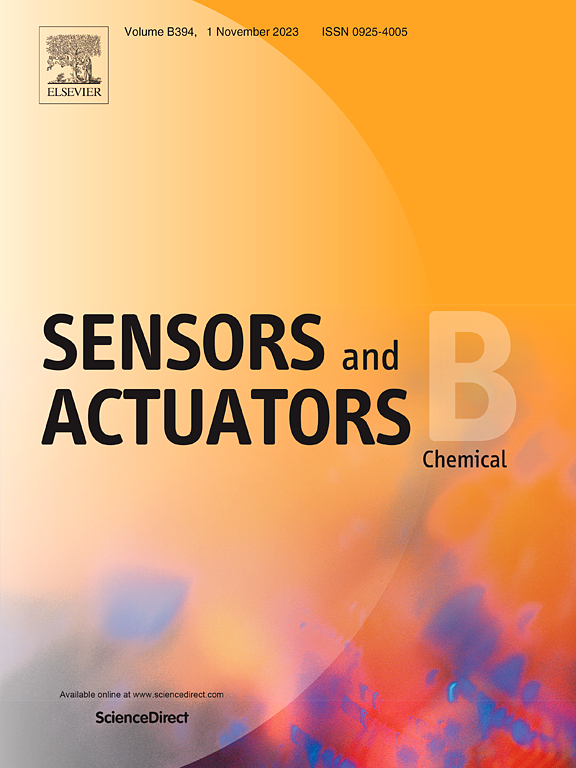Leveraging cellulose-binding domains to orient and immobilize single-domain antibodies onto paper-based immunoassays
IF 8
1区 化学
Q1 CHEMISTRY, ANALYTICAL
引用次数: 0
Abstract
Lateral flow assays (LFAs) are useful tools for detecting antigens at the point of care, but their performance can be further enhanced by leveraging newer antibody formats. Among these, single-domain antibodies (sdAbs) stand out for their stability, low-cost production, and ability to access cryptic epitopes, offering distinct advantages over traditional immunoglobulins (IgGs). However, the small size of sdAbs hinders their effective passive adsorption onto nitrocellulose membranes, a critical step affecting LFA performance. Fusing a monomeric or dimeric format of sdAbs with cellulose-binding domains (CBDs) addresses this challenge by enabling controlled and oriented immobilization onto cellulose-based substrates. Here, we developed an sdAb-based sandwich LFA that can detect the glycosyltransferase subdomain (GTD) of Clostridioides difficile toxin B (TcdB). To the best of our knowledge, this represents the first example of a sandwich format LFA that uses sdAb-CBD fusion proteins as the test line and sdAb dimers conjugated to gold nanoparticles for detection. The assay has a detection limit of 0.025 µg/mL (0.397 µM) of GTD when spiked in running buffer, thereby outperforming an analogous approach relying on passive adsorption methods in terms of both sensitivity and specificity. The prototype LFA successfully detected TcdB in spiked human fecal samples down to 1 µg/mL (3.7 µM), demonstrating its potential for point-of-care qualitative and (semi)quantitative diagnostic applications.
利用纤维素结合结构域定位和固定单域抗体到基于纸的免疫分析
横向流动试验(LFAs)是在护理点检测抗原的有用工具,但它们的性能可以通过利用新的抗体格式进一步增强。其中,单域抗体(sabs)因其稳定性、生产成本效益和接近构象表位的能力而脱颖而出,与传统的免疫球蛋白(igg)相比具有明显的优势。然而,单克隆抗体的小尺寸阻碍了其在硝化纤维素膜上的有效被动吸附,这是影响LFA性能的关键步骤。将单克隆抗体的单体或二聚体形式与纤维素结合结构域(CBDs)融合,通过在纤维素基底物上实现可控和定向固定,解决了这一挑战。在这里,我们开发了一个基于sdb的三明治LFA,可以检测艰难梭菌毒素B (TcdB)的糖基转移酶亚域(GTD)。据我们所知,这是三明治格式LFA的第一个例子,该LFA使用sdAb- cbd融合蛋白作为测试线,并将sdAb二聚体偶联到金纳米颗粒上进行检测。在运行缓冲液中加标时,该方法的检测限为0.025µg/mL(0.397µM)的GTD,因此在灵敏度和特异性方面优于依赖被动吸附方法的类似方法。原型LFA成功地在加标的人类粪便样品中检测到低至1µg/mL(3.7µM)的TcdB,证明了其在即时定性和(半)定量诊断应用中的潜力。
本文章由计算机程序翻译,如有差异,请以英文原文为准。
求助全文
约1分钟内获得全文
求助全文
来源期刊

Sensors and Actuators B: Chemical
工程技术-电化学
CiteScore
14.60
自引率
11.90%
发文量
1776
审稿时长
3.2 months
期刊介绍:
Sensors & Actuators, B: Chemical is an international journal focused on the research and development of chemical transducers. It covers chemical sensors and biosensors, chemical actuators, and analytical microsystems. The journal is interdisciplinary, aiming to publish original works showcasing substantial advancements beyond the current state of the art in these fields, with practical applicability to solving meaningful analytical problems. Review articles are accepted by invitation from an Editor of the journal.
 求助内容:
求助内容: 应助结果提醒方式:
应助结果提醒方式:


